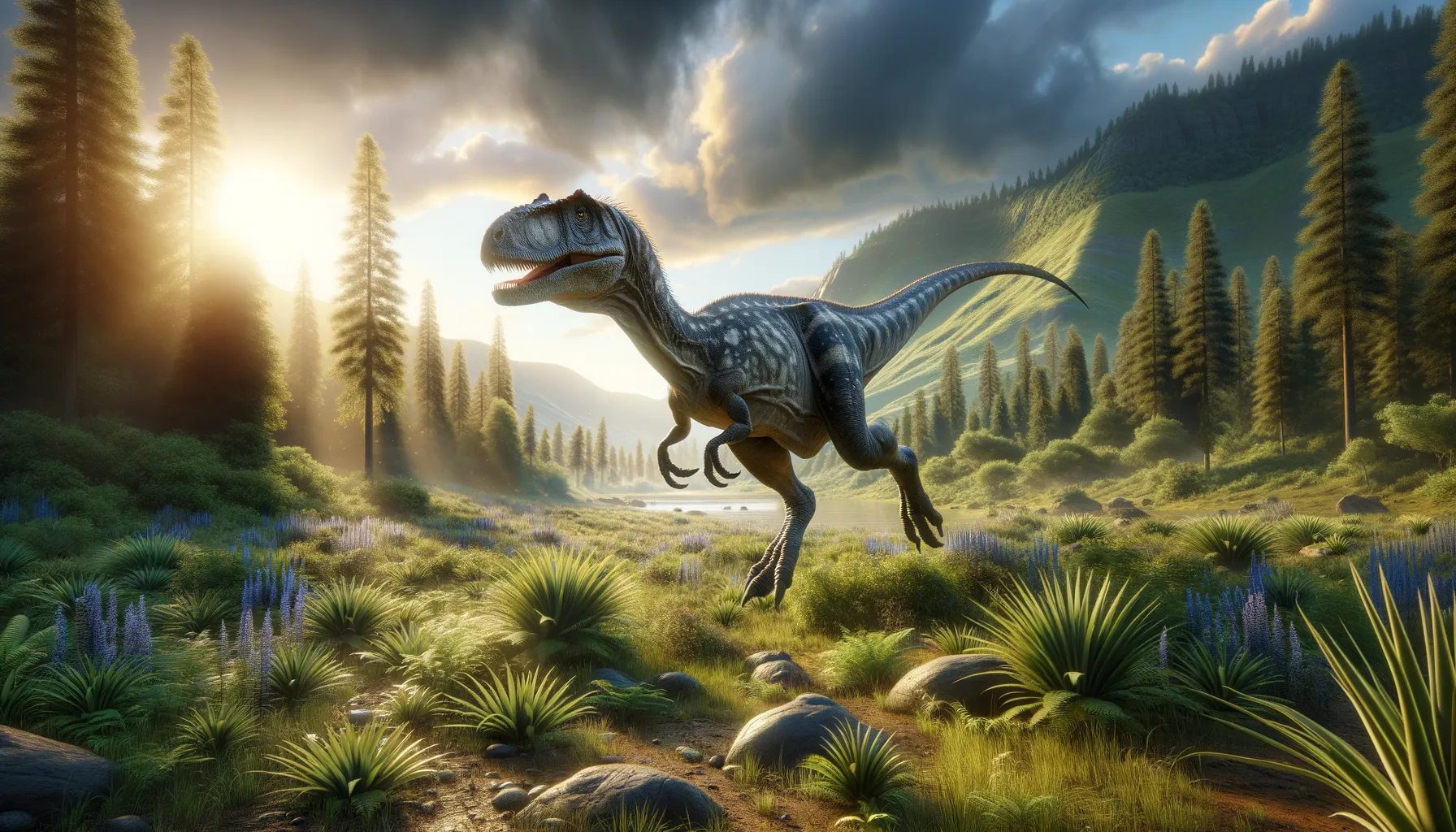
Camposaurus
Speedy hunter from the Triassic times.
Period
Triassic
Length
Measured around 1.5 to 2 meters long.
Height
Stood about 1 meter tall.
Weight
Approximately 60 to 100 kilograms.
Camposaurus was a small, agile theropod dinosaur known for its lightweight build and swift movement. Living during the Late Triassic period, it is considered one of the earliest known theropods. Its discoveries in North America have provided significant insights into dinosaur evolution. With a slender body and long, powerful legs, Camposaurus likely thrived as a quick predator or scavenger, relying on its speed to catch prey or evade larger predators.
Diet
Camposaurus likely had a carnivorous diet, preying on small animals and insects. Its teeth and jaw structure suggest it was well-adapted for capturing and consuming small vertebrates.
Hunting
As a small theropod, Camposaurus may have used its speed to ambush prey. It likely hunted alone, relying on stealth and agility to catch quick-moving animals or scavenge carcasses.
Environmental challenges
Camposaurus lived during a time of significant climatic variation, which presented challenges in finding consistent food sources. The changing environment may have led to competition with other theropods or larger predators. Survival required adaptations to these varying conditions, possibly influencing its diet and behavior. Droughts and fluctuating temperatures could have affected the availability of prey and vegetation in its habitat.
Speed
Camposaurus was relatively quick for its size.
Lifespan
Estimated to be around 20 to 30 years.
First discovery
First discovered in Arizona, USA, in the 1920s.
Fun Facts
- Camposaurus is a lesser-known theropod dinosaur that lived during the Late Triassic period, about 210 million years ago.
- This dinosaur was small, estimated to be only about 3 feet tall, making it a relatively lightweight predator of its time.
- Fossils of Camposaurus have mainly been found in North America, particularly in the southwestern United States.
- It was named Camposaurus in 1998, with the name 'Camposaurus' meaning 'Field lizard', after the paleontologist Charles Lewis Camp.
- Camposaurus is believed to be closely related to Coelophysis, another theropod dinosaur known for its slender, agile body.
- Although not much is known about Camposaurus due to the limited fossil record, it provides important insights into theropod evolution during the Triassic period.
- The discovery of Camposaurus helps highlight the diversity of early dinosaur life, even in regions like North America that were dominated by much larger dinosaur species.
Growth and Development
Camposaurus underwent rapid growth early in life, which likely helped it evade predators as it reached maturity. It is believed that juveniles grew quickly to reduce the vulnerable period in their early life stages. Growth rates may have been influenced by environmental factors such as nutrition and climate. Studies suggest that it reached its full size relatively quickly compared to other dinosaurs from its era.
Habitat
Camposaurus thrived in what is now North America, specifically around modern-day Arizona. Its habitat likely consisted of semi-arid environments with seasonal water sources. The landscape around Camposaurus included river valleys and floodplains, providing diverse ecosystems for hunting. It might have shared its habitat with a range of other early dinosaurs and reptilian species.
Interaction with other species
Camposaurus coexisted with many early dinosaurs and reptiles. It likely competed for resources with other small theropods and scavengers. In its ecosystem, Camposaurus may have played a role as both predator and prey, interacting with various species in a complex food web. Fossil evidence indicates it lived alongside larger herbivorous dinosaurs and contemporary predator species.
Natural lifespan
Camposaurus could live naturally up to three decades.
Reproduction
Camposaurus likely laid eggs, similar to other theropods. Its reproductive strategy might have involved building simple nests to protect its clutch from predators. Parental care, if any, would have been minimal, with hatchlings being precocial and quickly independent. Fossil discoveries haven't provided detailed insights into its breeding behavior.
Social behaviour
Camposaurus was probably a solitary hunter, focusing more on individual survival. Its social interactions might have been limited to mating and avoiding larger predators or competing scavengers. The absence of substantial pack behavior suggests it did not rely on group dynamics. Territorial disputes could have occasionally occurred, primarily over food resources.
Fossil locations
Fossils of Camposaurus have been primarily found in Arizona, USA. The discoveries have been limited but crucial in understanding early theropod evolution. Fossil evidence includes parts of the pelvis and hind limb bones. These remains have provided insights into its locomotion and anatomical features.
